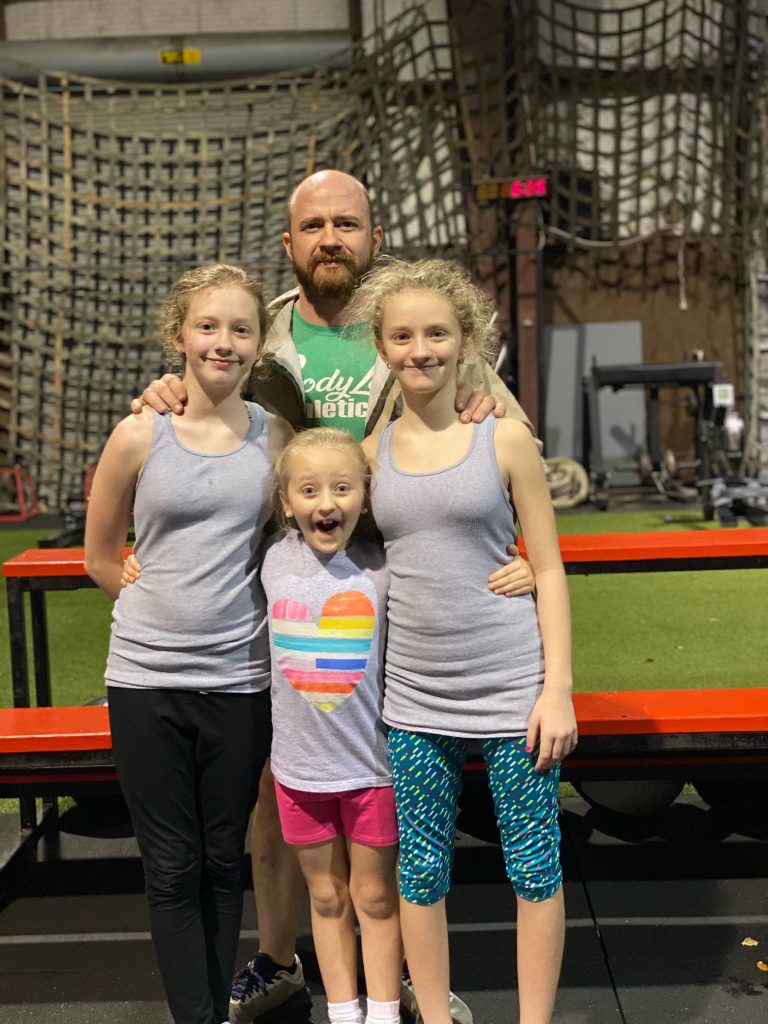Waylon Richter: Injured and Bed Ridden to Squatting 405 Pounds, Coaching CrossFit
In 2014, Waylon Richter started experiencing numbness, weakness and pain in his body that stemmed from his neck, through his back, sometimes all the way down to his toes.
- “I couldn’t get comfortable laying down or standing up…I was in constant pain,” said Richter, who was 32 at the time.
The details: Doctors determined Richter had both cervical spondylosis, a degenerative disc condition affecting the neck, and degenerative spondylolisthesis, a condition that occurs when one vertebra slips forward over the one below it.
- Richter, who also has rheumatoid arthritis, was in so much pain he was forced to stop working his job as a mechanic and spent his days at home, often sitting in a chair with his legs propped up at a certain angle to ease his pain, popping 15 to 20 Vicodin a day.
- After one year year of living like this, Richter began seeing a physical therapist who started getting him moving. It turned on a lightbulb on in his head, he explained, that maybe more movement, not less, was what he needed to heal.
- That’s when he took matters into his own hands and began educating himself at home about regaining mobility and strength. He started by reading Mark Rippetoe’s Starting Strength: Basic Barbell Training and Kelly Starrett’s Becoming a Supple Leopard: The Ultimate Guide to Resolving Pain, Preventing Injury, and Optimizing Athletic Performance and began implementing what he learned.
- At the time, Richter said he couldn’t have done a burpee if he wanted to. “So I just started doing whatever I could, like some yoga stuff and push-ups and squats, and eventually deadlifting and pressing,” Richter said. He was still in pain, but as he regained mobility and built strength, the pain decreased.
- Once he could do more physically, Richter started buying some equipment and building a home gym, which today, includes a squat rack and lifting platform with more than 1,000 pounds of weight, a rowing machine, some dumbbells, some bands and chains, some plyo boxes and a homemade reverse hyper.
- After four years of training at home, by 2019, Richter could squat 405 pounds.
One big thing: Through the countless doctors appointments, MRIs, injections, and prescription medications, no doctor ever told Richter to work on his mobility, strength or fitness.
- “I still haven’t been released by any doctor to pick up more than 20 pounds…but they had no problem prescribing me Vicodin,” he said. Had he not taken initiative himself, he said he feels like the medical system would have “kept me down forever just taking drugs and being on the couch.”

What happened next: After rehabilitating himself through strength training at home, Richter started to think about a career change.
- “I started to be interested in how I could help people who might be in a similar position that I was…I wanted to be a coach,” Richter said.
- So when he saw a coaching advertisement on Craigslist for The BodyLab CrossFit in Bryan, TX in 2019, he checked it out, and soon began as an intern coach under owner Matt Murski.
- Today, Richter is a part-time CrossFit coach at BodyLab CrossFit, but is hoping to transition to be a full-time coach in the future. And while he said he isn’t sure if he’ll ever be “100 percent pain-free,” his pain is a fraction of what it once was, and the only medication he takes now for the pain is CBD oil.
- “I love being able to help the average person just be able to move better, get out of pain and improve their life, or even like their ability to do things like get up and down the toilet,” Richter said of his passion for coaching, and for helping people get out of pain.
His message: Movement, not medication is the key to improving chronic pain.
- “It might be hard, even painful at first, but you have to move. I’m not a doctor and I know there are some cases and conditions where that might be an exception, but in a lot of cases, like mine, pain can be solved through some logical progressions of increasing your movement,” Richter said.
- He added: “Then you need to strengthen that range of motion. That strength part is the key. It was for me. You need to be strong…But first, you just need to start moving.”